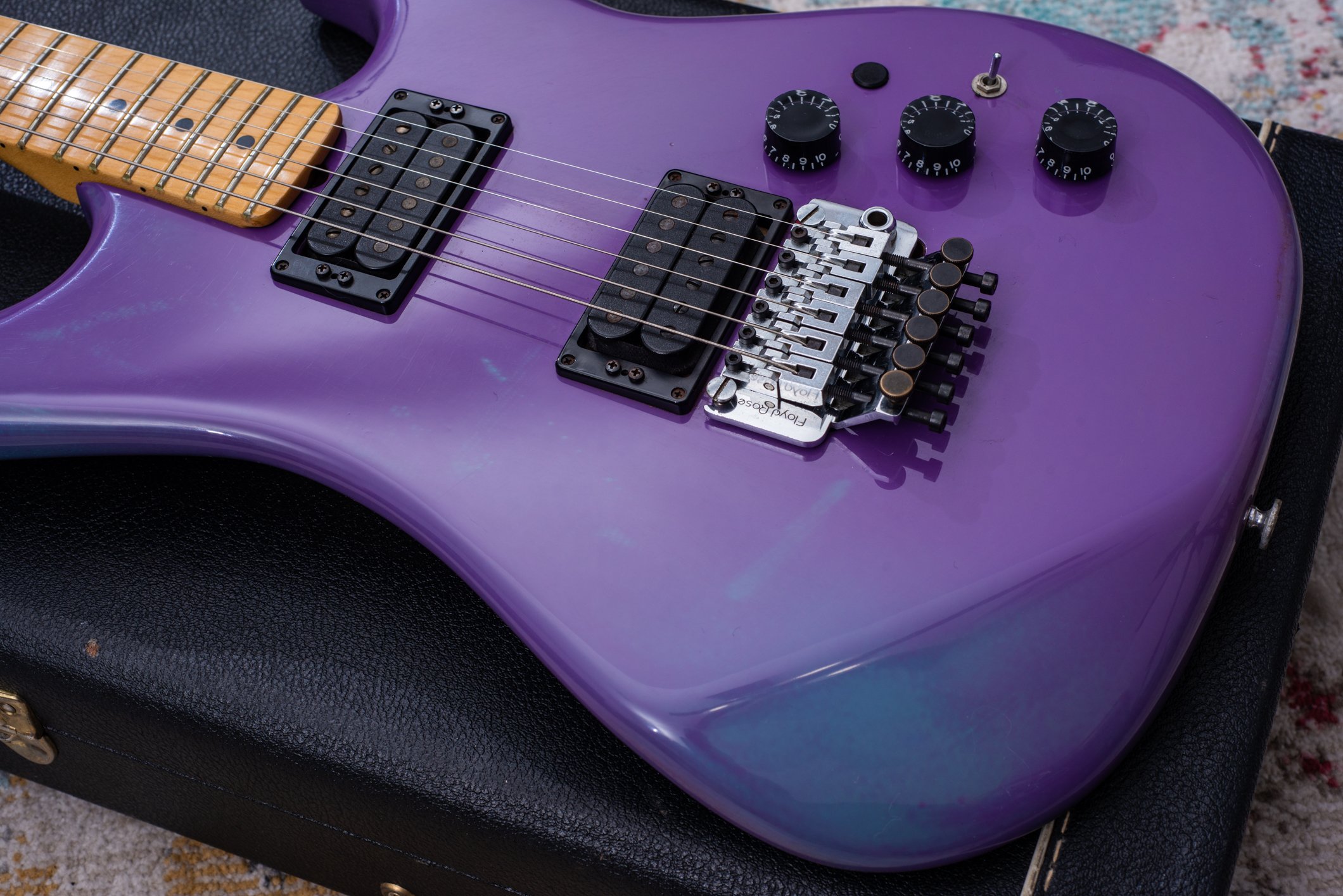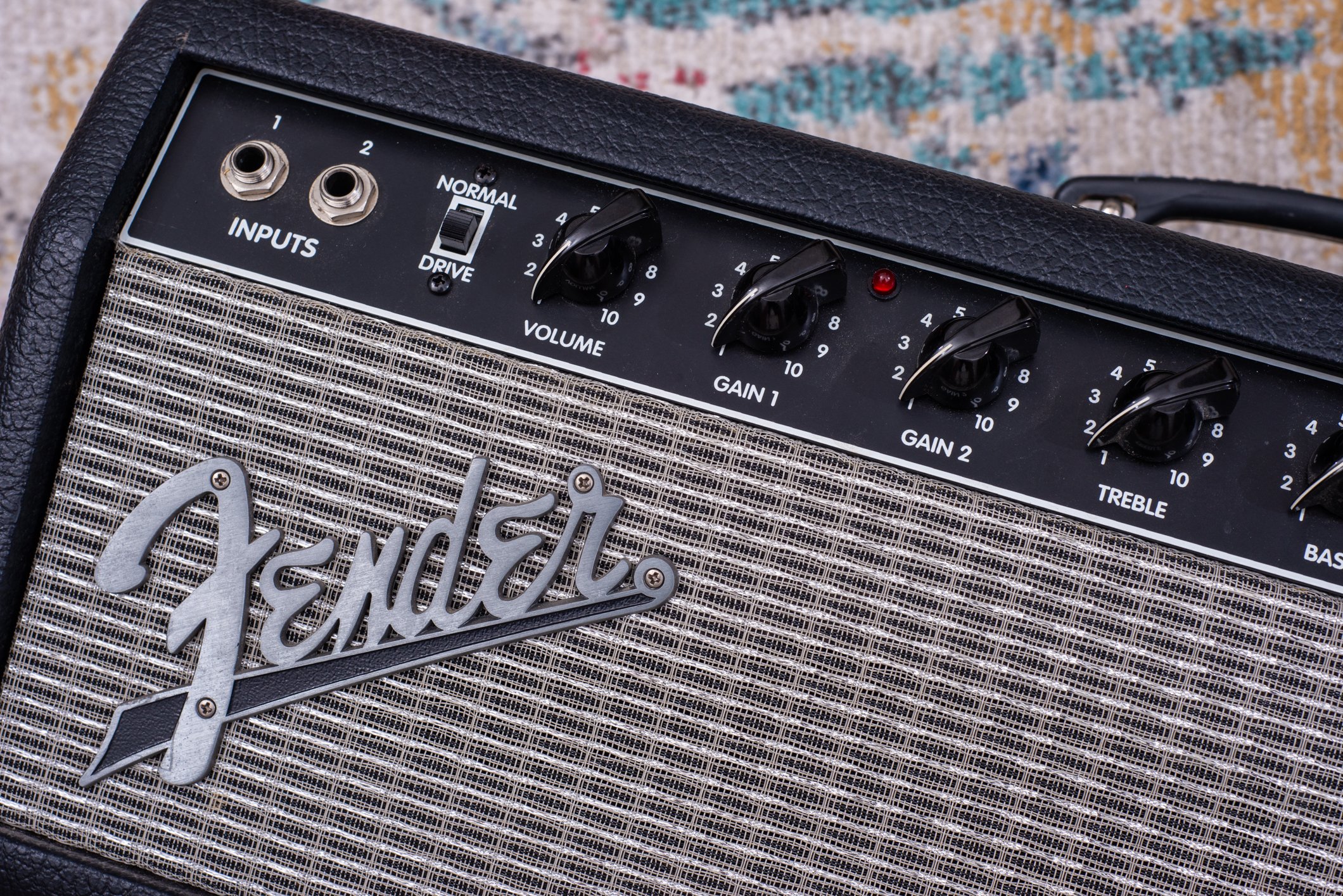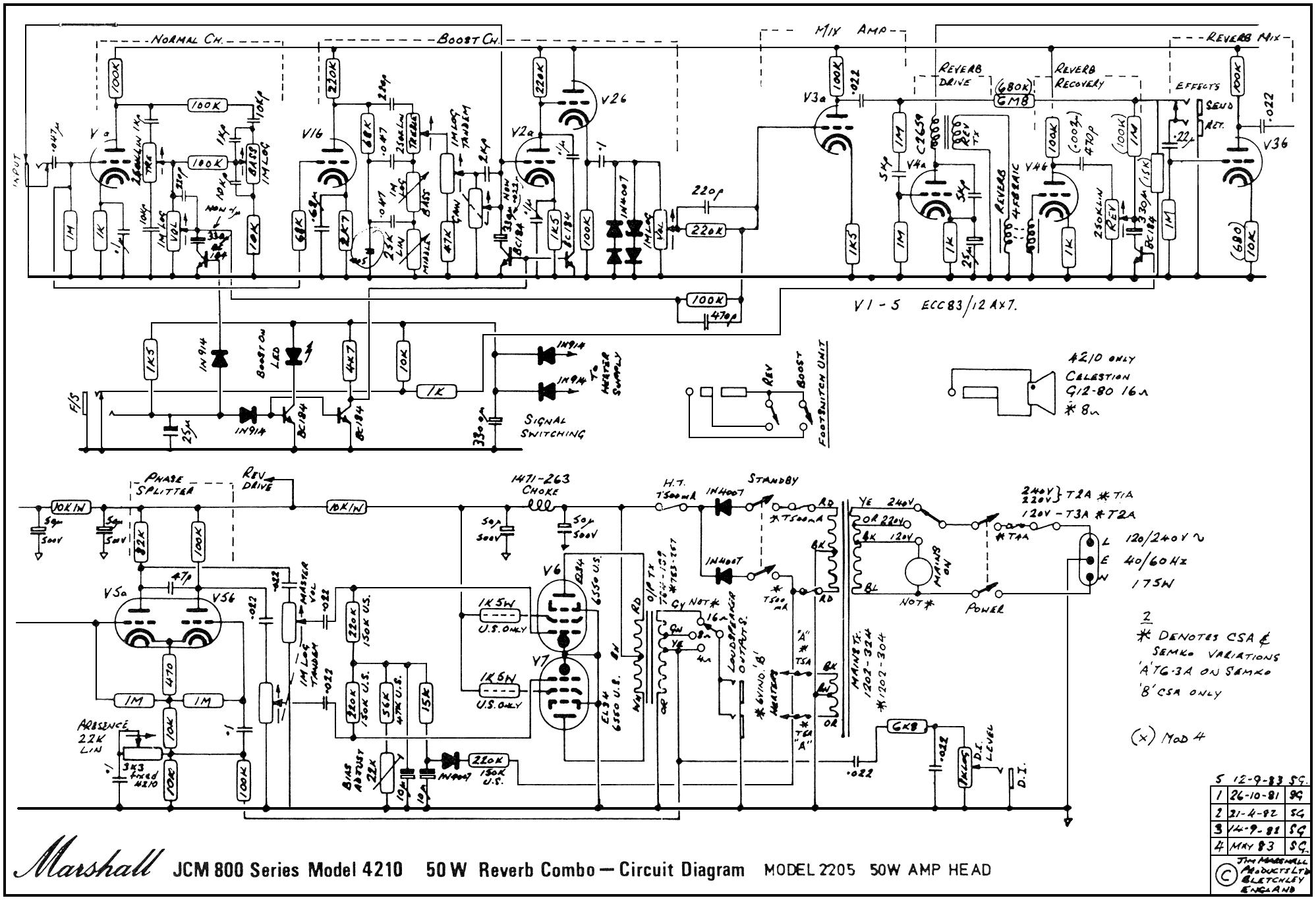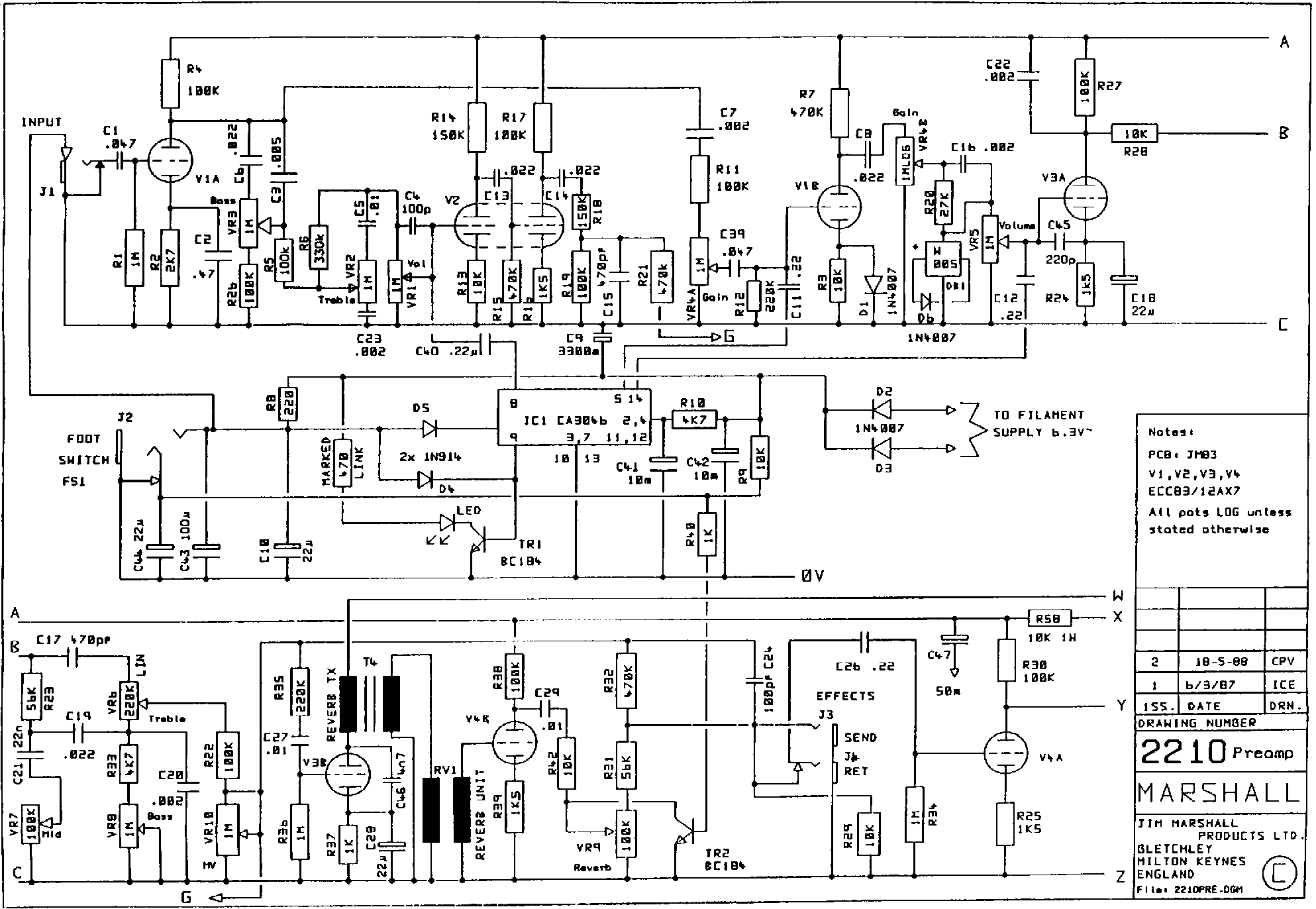I’ve been wanting an Avenger for a while, and though I was tempted by a few Hot Rod’s that came up for sale recently, I’m glad I waited. The Avenger is the higher gain version of that amp, theoretically the same or very similar circuit as the flagship SLO100’s lead channel with a few voicing changes. This early revision Avenger is equipped with Mercury Magnetics transformers, as opposed to the DeYoung transformers of the SLO100 or Onetics that some very early metal-panel Avengers had.
A previous owner looks to have added a few holes to the amp - 3 on the front panel, and 3 on the rear panel, as well as two holes in the top of the chassis that had tube sockets mounted in them at one point. Based on the position of one of them, it looks like a tube buffered effects loop was added, but I’m not really sure what the 3 holes in the front with that tube were for… maybe a tube overdrive with gain/volume/tone controls? Either way, all of these mods have been reversed and I checked over the amp meticulously, and it’s completely restored to stock Avenger values.
Normally I’d be a bit annoyed about the extra holes, but I have to say this amp sounds absolutely fantastic. It’s crystal clear even under high gain, although it never gets metal saturated on its own - very unlike the Splawn Nitro from the previous post. However, this has to be one of the best amps I have ever played for taking a boost. Almost any boost I throw at it provides a great sound, using the Avenger tone as the basis and the pedal for texture. My favorite reliable Ibanez TS7 is great here, with the gain set around 6-7 on the Avenger and all other controls at noon and it’s already a killer high gain tone. Tweaking the bass and depth helps tighten up for very low tunings, or dipping the mids down for chording in standard just sounds great. Consider me very impressed.





















